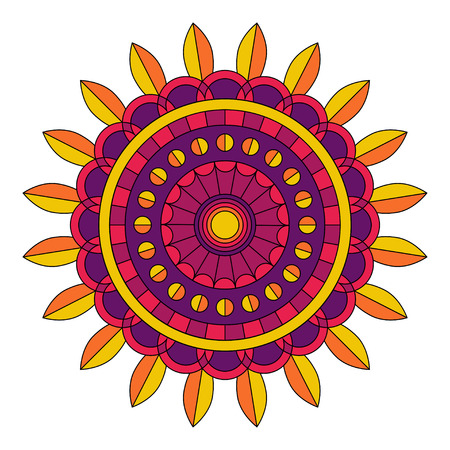1. Understanding Vastu and Its Relevance for Modern Indian Homes
Vastu Shastra, an ancient Indian science of architecture, offers timeless guidelines for creating spaces that nurture harmony, positivity, and well-being. Rooted in the wisdom of the Vedas, Vastu emphasizes the significance of balancing the five elements—earth, water, fire, air, and space—to channel positive energy into our living environments. In today’s rapidly urbanizing India, with the rise of flats and apartments replacing traditional independent homes, many people wonder if Vastu still holds relevance. The answer is a resounding yes. Even in compact city dwellings, the principles of Vastu can be thoughtfully applied to bring balance and serenity. By selecting the right colours for different rooms and directions in your flat or apartment, you can invite prosperity, happiness, and good health into your home while staying rooted in Indian culture and tradition.
Significance of Colour in Vastu for Indian Flats
In the vibrant context of Indian living, colours are more than just decoration—they are powerful channels of energy that deeply influence our emotions and overall well-being. According to Vastu Shastra, the ancient Indian science of architecture and harmony, every shade carries its own frequency, shaping the atmosphere within flats and apartments. Choosing the right colours for your home is believed to create balance, attract positivity, and support harmonious relationships among family members.
Vastu divides spaces according to the five elements—earth, water, fire, air, and space—and recommends specific colours for each direction and room to enhance their beneficial energies. For instance, soothing blues and greens can bring peace to bedrooms in the west or north-west, while energising reds or oranges can invigorate a kitchen located in the south-east. The thoughtful selection of wall hues is especially important in urban Indian apartments, where space is often limited and every detail matters in crafting a nurturing environment.
To illustrate how different colours align with Vastu principles and their impact on mood and energy in Indian homes, refer to the table below:
| Direction/Room | Recommended Colour | Vastu Element | Influence on Mood & Energy |
|---|---|---|---|
| North-East (Pooja Room) | Light Yellow, White | Water | Promotes clarity, spiritual growth |
| South-East (Kitchen) | Red, Orange, Pink | Fire | Energises, boosts appetite |
| South-West (Master Bedroom) | Earthy Brown, Peach | Earth | Stabilises emotions, nurtures relationships |
| North (Living Room) | Green, Blue | Air/Water | Invites prosperity, calmness |
| East (Study/Children’s Room) | White, Light Green | Air/Space | Improves focus, encourages learning |
This conscious use of colour transforms a flat from mere shelter into a sanctuary aligned with cosmic energies. By tuning into the subtle guidance of Vastu Shastra and infusing your apartment with mindful colour choices, you can nurture a home that not only looks beautiful but also radiates positive vibrations for everyone who enters.

3. Recommended Vastu Colours for Different Rooms
Choosing the right colours for each space in your flat or apartment is essential for maintaining a positive flow of energy, as per Vastu Shastra. Here are Vastu-compliant colour suggestions for various rooms to harmonise your living environment and bring balance to your daily life:
Living Room
The living room is the heart of Indian homes where families gather and guests are welcomed. According to Vastu, soft shades like light green, beige, cream, or subtle yellows create a welcoming and peaceful ambience. These colours encourage harmony and openness, making everyone feel at ease.
Bedrooms
Master Bedroom
The master bedroom should ideally be painted in soothing hues such as light blue, earthy brown, or pastel green. These colours promote relaxation and restful sleep, which is vital for rejuvenation.
Children’s Bedroom
For children’s rooms, opt for gentle tones like light green or soft yellow. These shades inspire creativity and keep the atmosphere cheerful while supporting concentration and growth.
Kitchen
The kitchen represents the fire element in Vastu. Warm colours such as orange, brick red, or lemon yellow are recommended to energise this space. Avoid dark colours like black or deep grey here, as they may dampen positivity.
Bathroom
Bathrooms benefit from calm and fresh tones like white, sky blue, or light grey. These colours evoke cleanliness and purity, helping to maintain the balance of energies associated with water elements in the home.
Balcony
Balconies connect you with nature and the outdoors. Earthy shades like green or light brown help create a serene transition between your indoor sanctuary and the outside world. Such colours foster peace and help you unwind after a busy day.
Pooja Room
The pooja (prayer) room is a sacred space in Indian flats and apartments. Pure white, soft yellow, or pale orange are highly auspicious choices according to Vastu Shastra. These colours amplify spiritual energies, enhancing your daily prayers and meditation practices.
4. Choosing Colours According to Direction in Apartments
In Indian culture, Vastu Shastra strongly recommends selecting wall colours based on the directional orientation of each room to enhance positive energy and harmony. Each direction is governed by different elements and planetary influences, so choosing the right hues can significantly impact well-being, prosperity, and peace within flats and apartments.
Guidelines for Direction-Based Colour Selection
The following table summarises the ideal Vastu colours for walls according to the room’s main direction:
| Direction | Element | Recommended Colours | Rooms Best Suited |
|---|---|---|---|
| East | Air (Vayu) | Light Blue, White, Green | Living Room, Study |
| West | Water (Varun) | Blue, Grey, Cream | Dining Room, Children’s Room |
| North | Wealth (Kubera) | Green, Pista Green, Light Blue | Pooja Room, Office Space |
| South | Fire (Agni) | Red, Orange, Pink, Coral | Master Bedroom, Kitchen |
Practical Vastu Tips for Urban Apartments
- If your flat has limited natural light from a certain direction, opt for softer shades from the recommended palette to maintain balance without overwhelming the space.
- Avoid using dark or dull colours like black or deep grey in the North and East sectors as these may disrupt positive energy flow.
Cultural Context: Why Direction Matters in India
The ancient Indian wisdom of aligning living spaces with nature is still relevant for modern apartment dwellers. By mindfully choosing wall colours as per Vastu guidelines based on directions, you can invite health, wealth, and serenity into your home—turning your city flat into a haven of harmonious energies and vibrant living.
5. Avoiding Inauspicious Colours and Common Mistakes
In Vastu Shastra, selecting the right colours for your flat or apartment is not just about aesthetics—it’s about inviting harmony and positive energy into your home. However, many residents in India unknowingly choose inauspicious shades or make common painting mistakes that disrupt the energetic flow.
Identifying Colours That Disrupt Positive Energy
Some colours are traditionally considered unfavourable in Indian culture. For example, excessive use of black is often discouraged as it absorbs energy and may bring heaviness into the home environment. Similarly, deep reds can evoke aggression if used in large amounts, particularly in bedrooms or puja rooms. Dark greys and dull browns can also create a sense of gloom, blocking the cheerful and vital energies that Vastu seeks to enhance.
Common Painting Errors in Indian Apartments
- Ignoring Directional Guidance: One frequent mistake is disregarding the directional rules of Vastu. Each direction—north, south, east, and west—has its own recommended colour palette. Applying colours randomly without considering these guidelines can lead to imbalance.
- Overusing Bright Colours: While vibrant hues like yellow and orange are auspicious when used thoughtfully, overdoing them can result in overstimulation and restlessness, especially in spaces meant for relaxation such as bedrooms.
- Poor Quality Paints: Using low-quality paints not only affects durability but can also emit harmful fumes, negatively impacting the overall energy and health within your home.
Cultural Sensitivities Matter
It’s important to respect local traditions when choosing colours. For example, green is associated with prosperity in many parts of India but may be avoided during certain festivals or by specific communities. Always consider these cultural nuances along with Vastu principles for the most harmonious outcome.
Avoiding these pitfalls ensures that your living space remains a sanctuary of positivity, peace, and well-being—a true reflection of mindful Indian living guided by Vastu wisdom.
6. Practical Tips for Applying Vastu Colours in Compact Flats
Consider Space and Light in Indian Apartments
When selecting Vastu colours for your flat, always start by observing the natural light available in each room. In many modern Indian apartments, rooms can be compact and may not receive ample sunlight. For such spaces, opt for lighter Vastu-friendly shades like off-white, pale yellow, or soft green to create an open and airy feel. Avoid using dark or heavy colours in small rooms as they can make the space feel more cramped and diminish positive energy flow.
Smart Colour Choices for Different Zones
Each area of your apartment serves a different purpose and aligns with specific Vastu directions. Use soothing blues or gentle greens in the North-East for meditation corners or prayer rooms, while energising yellows or beige work well for living rooms facing East. In bedrooms, especially those in the South-West, select calming tones like cream or pastel pink to encourage restful sleep and harmony. For kitchens in the South-East, consider warm shades like orange or brick red to enhance Agni (fire element) without overwhelming the senses.
Blending Vastu Principles with Modern Layouts
Indian flats often feature open layouts that merge living and dining spaces. To maintain Vastu balance, use subtle colour transitions—such as a feature wall in an auspicious shade—to define zones without harsh boundaries. If repainting is difficult, incorporate Vastu-compliant colours through décor elements like cushions, curtains, or artwork. This approach allows you to respect both your landlord’s rules and Vastu wisdom.
Practical Suggestions for Renters and Busy Urbanites
If you live in a rented flat or have limited flexibility for major changes, try adding vastu-friendly hues with removable wallpaper, rugs, bed linens, or even fresh flowers. Ensure that every corner is clutter-free so that the chosen colours can radiate their full effect. Remember, the goal is to invite positivity into your home while adapting gracefully to urban Indian lifestyles.
7. Blending Traditional Vastu with Contemporary Interior Styles
Modern Indian homes, especially in urban flats and apartments, often strive for a balance between cultural wisdom and contemporary aesthetics. Harmonising Vastu colour recommendations with trendy décor themes is possible, allowing you to enjoy both peaceful energy and stylish living. Begin by choosing a neutral base palette inspired by Vastu—such as off-whites, light yellows, or soft greens for walls—then layer these with chic accents like metallic finishes or geometric patterns that reflect your personal taste. For example, if Vastu suggests green in the north direction, consider sage-green feature walls paired with minimalist wooden furniture for an elegant yet grounded look.
Layering Textures and Accessories
To keep your space vibrant yet Vastu-compliant, use furnishings and accessories to introduce pops of recommended colours. Cushions, rugs, curtains, and artwork in auspicious shades can energise rooms without overwhelming them. Mixing traditional Indian crafts like handloom throws or brass lamps with modern décor elements creates a home that feels rooted yet fresh.
Balancing Functionality with Spiritual Harmony
Contemporary Indian apartments often have multifunctional spaces. Use clever zoning—like partition screens or open shelving painted in Vastu-approved hues—to subtly demarcate areas while maintaining positive energy flow. Incorporating indoor plants in corners prescribed by Vastu can further amplify tranquility and style.
Personal Expression within Vastu Guidelines
Remember, the essence of Vastu is about enhancing well-being through thoughtful design. Infuse your personality into each room while respecting directional colour tips: perhaps a bold blue accent chair in the west, or soft peach cushions in the southeast. This fusion of tradition and trend ensures your flat remains both harmonious and uniquely yours—a sanctuary where ancient guidance meets modern Indian living.

